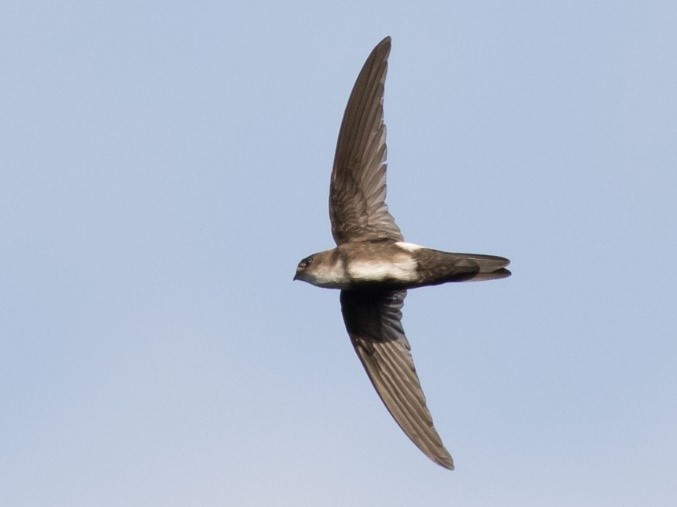Birdfinding.info ⇒ Common and easy to find in lowland areas with palm trees on Cuba, Jamaica and Hispaniola. Nests in small colonies that are typically located in the mats of dead palm fronds that accumulate on old palm trees. One established colony tree is at Montego Bay’s Sangster International Airport. Also nests in palm-thatched roofs, and as this is a ubiquitous tropical resort motif it nests in at many seaside resorts, including those at Montego Bay, Negril, Ocho Rios, Punta Cana, Puerto Plata, La Romana, etc. On Puerto Rico, most records are from the north coast and the southwest.
Antillean Palm-Swift
Tachornis phoenicobia
Endemic to Cuba, Jamaica, Hispaniola, and their satellites. Occurs mainly in semiopen lowland habitats with palm trees, including savannas, farmland, and coastal scrub. Also in many towns and cities, where it nests in ornamental palms. In some areas it roams to higher elevations during its daily foraging.
The two subspecies are recognizable as distinct forms:
“Cuban Palm-Swift” (iradii): Cuba, the Isle of Youth, and smaller adjacent islands. Vagrant to the Florida Keys: a pair at Key West from July 7 to August 13, 1972, and one at Grassy Key, July 15-23, 2019.
“Antillean Palm-Swift” (phoenicobia): Jamaica, Hispaniola, and smaller adjacent islands (Saona, Beata, and Île-á-Vache). Rare but increasingly regular on Mona and Puerto Rico, where it may be in the process of expanding its range.
Recent records on Great Inagua—including a flock of seven in September 2019—suggest that one of the subspecies may be a regular straggler or prospective colonist there.
Additional records from Grand Cayman and North Caicos are not certainly assignable to either subspecies—although the Grand Cayman record occurred after a storm that had passed over Jamaica, which suggests that the bird originated there.
Identification
A small, thin swift with a conspicuous partially divided white rump patch, pale throat, thin dark “vest” and collar, and white breast and belly. Habitually flies low.
The two forms can often be distinguished in the field under optimal viewing conditions, although both vary somewhat and many individuals seem to be intermediate.
“Antillean Palm-Swift” typically appears blackish above and has contrastingly dark sides and a shallowly notched tail.
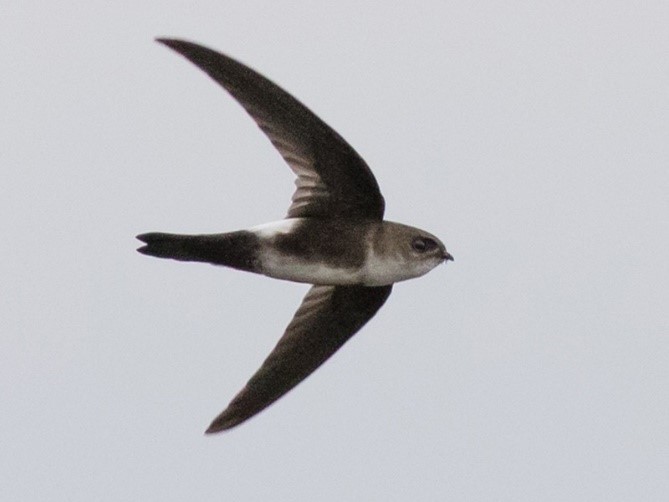
Antillean Palm-Swift, T. p. phoenicobia, showing the extensively dark sides, as is typical of this form. (Montego Bay Sewage Ponds, Jamaica; March 9, 2018.) © Tom Johnson
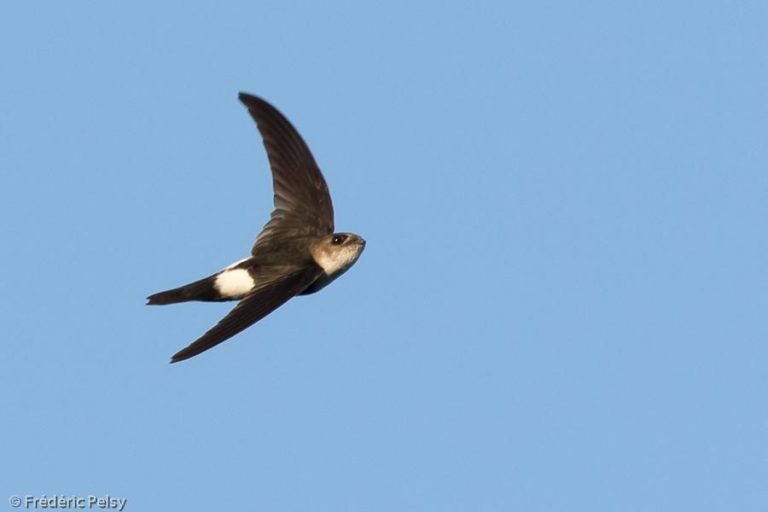
Antillean Palm-Swift, T. p. phoenicobia, showing largely blackish upperparts and partially divided white rump patch. (Alcoa Road, Dominican Republic; March 31, 2017.) © Frédéric Pelsy
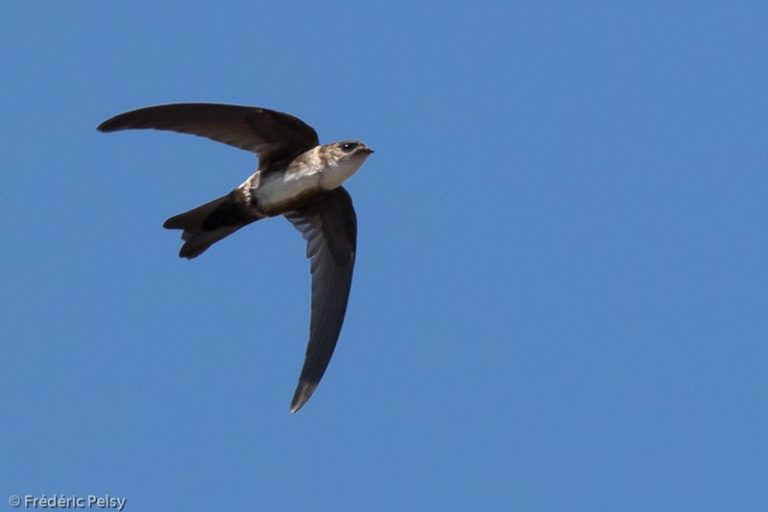
Antillean Palm-Swift, T. p. phoenicobia, showing the rounded, shallowly forked tail typical of this form. (Santo Domingo, Dominican Republic; March 2017.) © Frédéric Pelsy
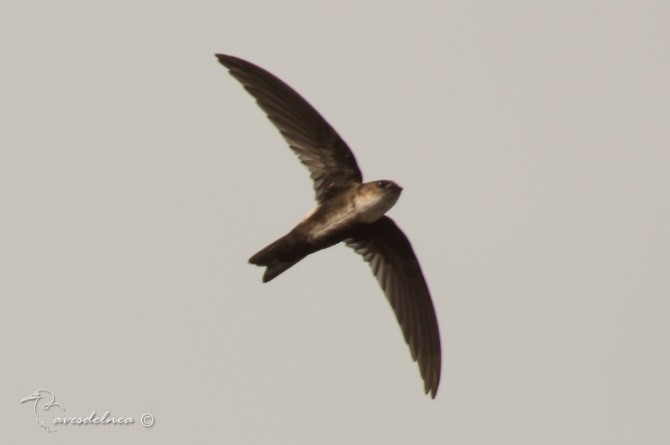
Antillean Palm-Swift, T. p. phoenicobia, showing unusually extensive dark coloration on the underparts and a sharp fork in the tail. (Bávaro, Dominican Republic; January 21, 2018.) © Marcelo Allende
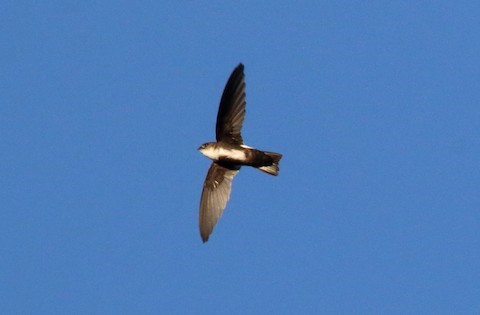
Antillean Palm-Swift, T. p. phoenicobia, showing the strongly contrasting dark sides and shallowly notched tail typical of this form. (Punta Cana, Dominican Republic; January 25, 2017.) © Rick Folkening
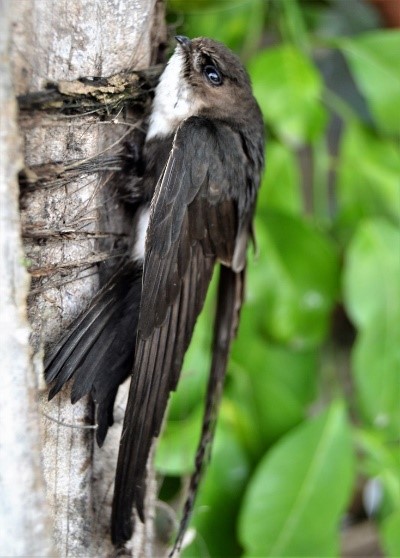
Antillean Palm-Swift, T. p. phoenicobia, showing largely blackish upperparts and sides, and contrasting white throat. (Santiago de los Caballeros, Dominican Republic; January 24, 2018.) © Henry Abréu Domínguez

Antillean Palm-Swift, T. p. phoenicobia, showing partially divided white rump patch and the shallowly forked tail that is typical of this subspecies. (Santiago de los Caballeros, Dominican Republic; August 13, 2017.) © Henry Abréu Domínguez
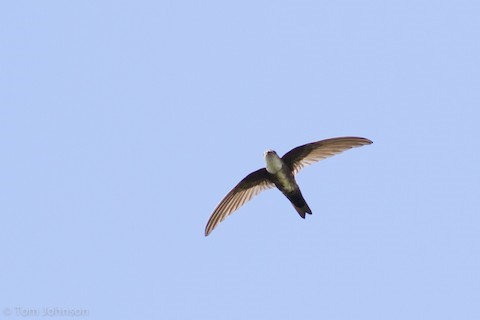
Antillean Palm-Swift, T. p. phoenicobia. (National Botanical Garden, Santo Domingo, Dominican Republic; March 15, 2015.) © Tom Johnson
“Cuban Palm-Swift” typically has a more sharply and deeply forked tail and dusky, smudgy coloration, often especially pale on the head.
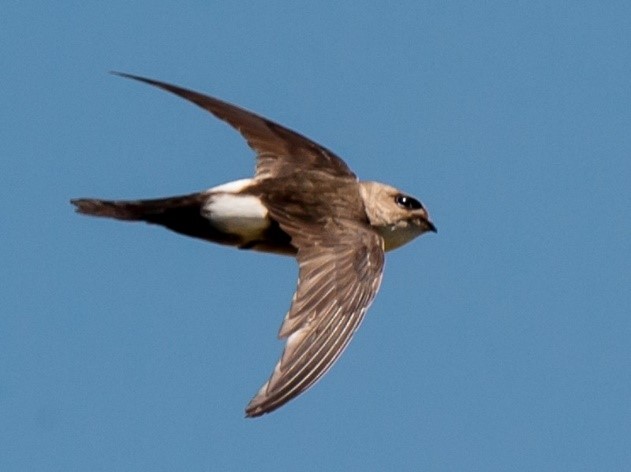
“Cuban Palm-Swift,” T. p. iradii, showing divided white rump patch and the pale head that is typical of this subspecies. (Guantánamo Bay, Cuba; February 1, 2018.) © Wayne Fidler

“Cuban Palm-Swift,” T. p. iradii. (Horizontes La Ermita, Pinar del Río, Cuba; February 10, 2017.) © Joshua D. Vandermeulen
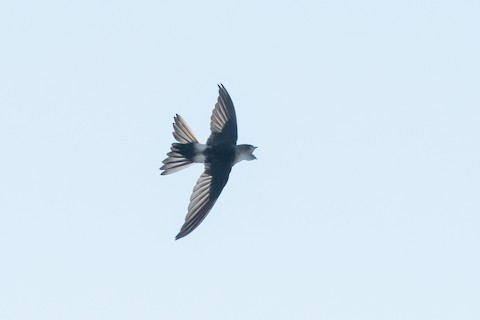
“Cuban Palm-Swift,” T. p. iradii, mouth open wide. (Grassy Key, Florida; July 21, 2019.) © Melissa James
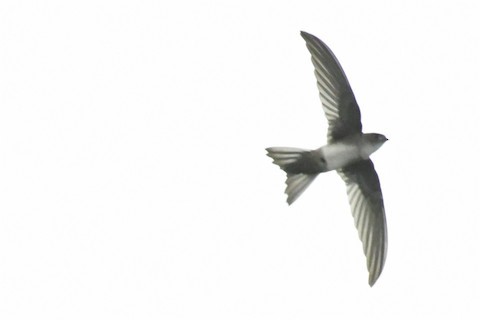
“Cuban Palm-Swift,” T. p. iradii, showing forked tail and smudgy sides. (Grassy Key, Florida; July 19, 2019.) © Jim Collins
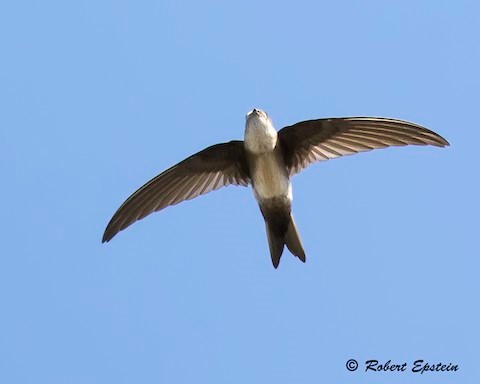
“Cuban Palm-Swift,” T. p. iradii, showing the deeply forked tail typical of this subspecies. (Grassy Key, Florida; July 17, 2019.) © Robert Epstein

“Cuban Palm-Swift,” T. p. iradii, showing the pale head and deeply forked tail that are typical of this subspecies. (Varadero, Matanzas, Cuba; September 17, 2014.) © Tinyfishy
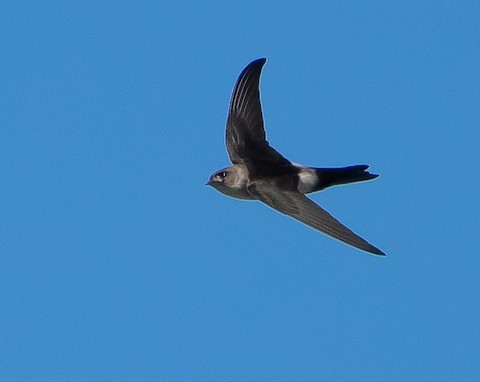
“Cuban Palm-Swift,” T. p. iradii, showing partially divided white rump patch and the pale head that is typical of this subspecies. (Grassy Key, Florida; July 17, 2019.) © Lizabeth Southworth

“Cuban Palm-Swift,” T. p. iradii, showing deeply forked tail. (Grassy Key, Florida; July 19, 2019.) © Paul Hueber
Voice. Rapid, high-pitched twittering:
There may be consistent differences, not obvious to human ears, between the two forms’ vocalizations, as their sonograms appear to have somewhat different signatures:
“Antillean” (phoenicobia) shows discreet clusters of notes with low, rounded, peaks.
“Cuban” (iradii) shows continuous, evenly spaced notes with a sharp, high peaks.
Notes
Polytypic species consisting of two recognized subspecies: phoenicobia and iradii. Based on differences in size, coloration, tail shape, iradii should be recognized as a distinct form: “Cuban Palm-Swift.” Detailed comparison of vocalizations may yield differences that are diagnostic.
References
Chantler, P., and G.M. Kirwan. 2017. Antillean Palm-swift (Tachornis phoenicobia). In Handbook of the Birds of the World Alive (J. del Hoyo, A. Elliott, J. Sargatal, D.A. Christie, and E. de Juana, eds.). Lynx Edicions, Barcelona. https://www.hbw.com/node/55318. (Accessed September 29, 2019.)
Damaj, O. 2014. Antillean Palm-Swift (Tachornis phoenicobia), version 1.0. In Neotropical Birds Online (T.S. Schulenberg, ed.). Cornell Lab of Ornithology, Ithaca, N.Y. https://doi.org/10.2173/nb.anpswi.01.
eBird. 2019. eBird: An online database of bird distribution and abundance. Cornell Lab of Ornithology, Ithaca, N.Y. http://www.ebird.org. (Accessed September 29, 2019.)
Garrido, O.H, and A. Kirkconnell. 2000. Field Guide to the Birds of Cuba. Cornell University Press, Ithaca, N.Y.
Haynes-Sutton, A., A. Downer, R. Sutton, and Y.-J. Rey-Millet. 2009. A Photographic Guide to the Birds of Jamaica. Princeton University Press, Princeton, N.J.
Howell, S.N.G., I. Lewington, and W. Russell. 2014. Rare Birds of North America. Princeton University Press, Princeton, N.J.
Latta, S., C. Rimmer, A. Keith, J. Wiley, H. Raffaele, K. McFarland, and E. Fernandez. 2006. Birds of the Dominican Republic and Haiti. Princeton University Press, Princeton, N.J.
Raffaele, H., J. Wiley, O. Garrido, A. Keith, and J. Raffaele. 1998. A Guide to the Birds of the West Indies. Princeton University Press, Princeton, N.J.
